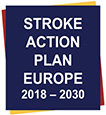Life after Stroke

A large and overarching domain
It takes family, friends and others who provide care and support for the stroke survivor, and whose own quality of life is also potentially affected into consideration and covers stroke survivors living at home and in institutional homes.
Around a third of stroke survivors are disabled, have poor post-stroke cognitive ability and poor mental health. Surveys show that communication, social relationships, loneliness, incontinence, fatigue and finance needs especially are unmet, and social integration is missing. There is a strong need for personal care plans after rehabilitation ends, and for coordinated support.
The development and use of Patient Reported Outcome Measures (PROMs) is urgently needed to address the paucity of data and to provide evidence for better provision. There is an emphasis on PROMs relating to ADL (activities of daily living), self-perceived health, health-related quality of life, mood, pain, satisfaction with stroke services, rehabilitation and community support; all of these are important for stroke survivors.

SAP-E Key Performance Indicator
Follow-up at 3-6 months after the stroke incident including a Post Stroke Check list and a functional assessment and referral for relevant interventions (% patients with follow-up).
Further research and development priorities
- What are the experiences and needs of stroke survivors at different times during their lifespan?
- What are the needs of different cohorts of stroke survivors? This needs to include patient- and carer-reported outcomes, and to address the challenges of stroke survivors with multiple morbidities, and their carers, in order to enable the design of optimal care pathways.
- What would a model of best care and long-term support look like? This should include the provision of three to six-month and annual reviews and specific roles to provide holistic coordinated support.
- What products and services (digital and physical) would support self-management, community integration, education and healthcare?
- How can high-quality information and training to help non-specialist staff, especially social care staff, be targeted? It is envisaged that this will involve research around staffing levels, core competencies and the involvement of non-governmental and non-profit-making bodies such as charities and voluntary groups.



